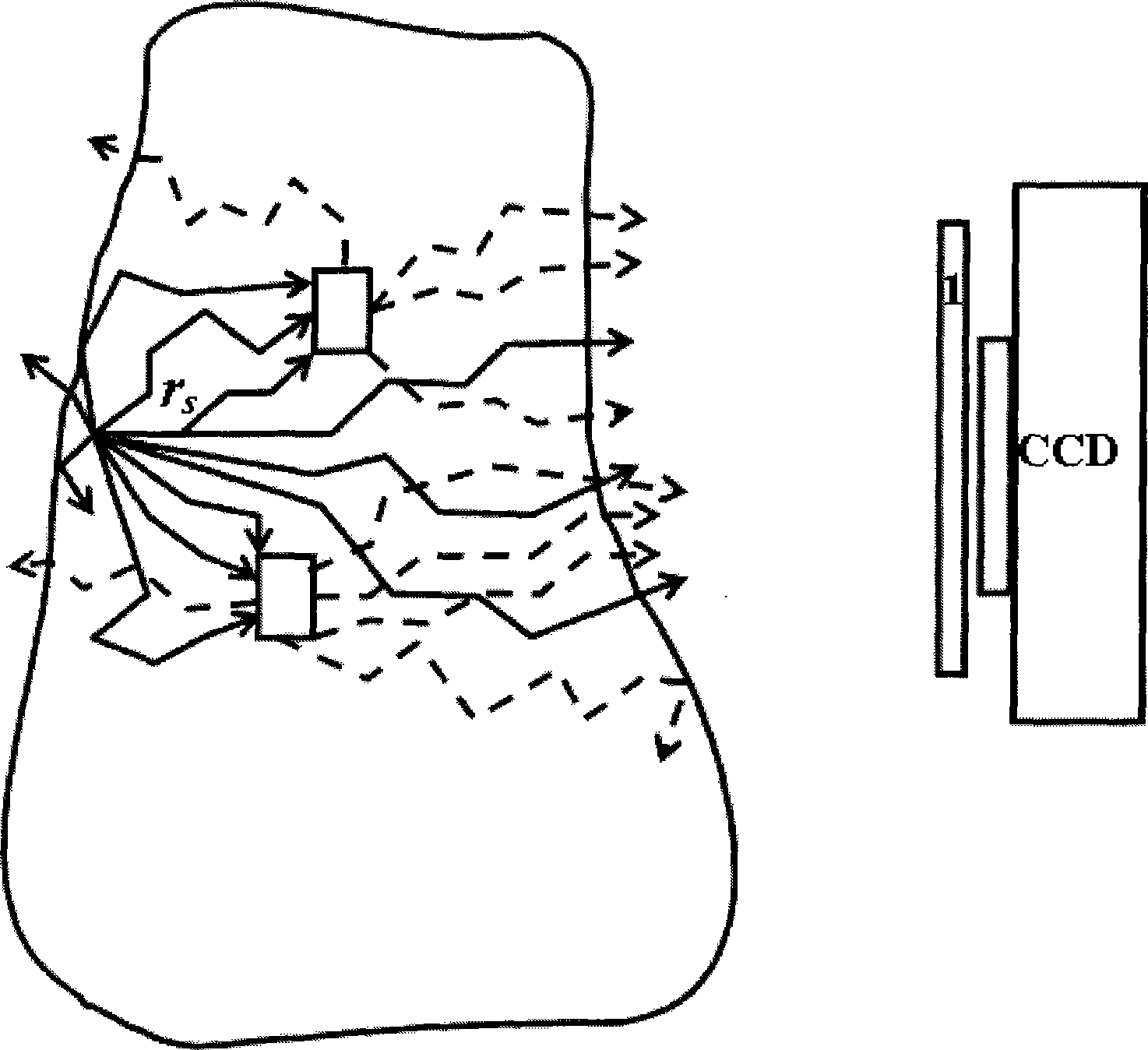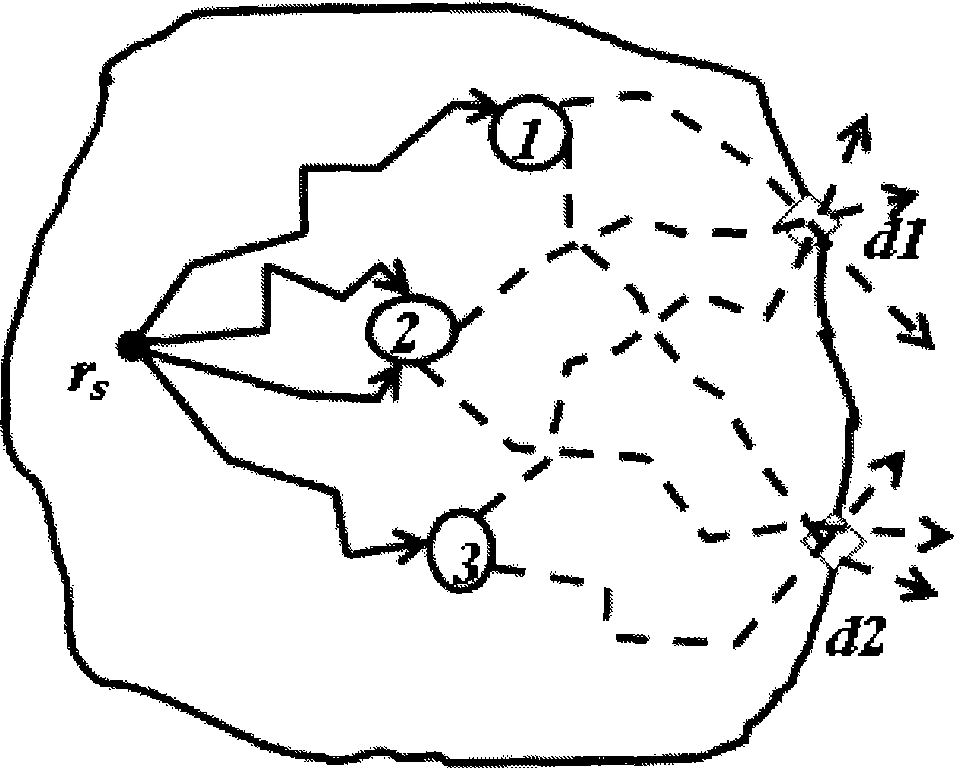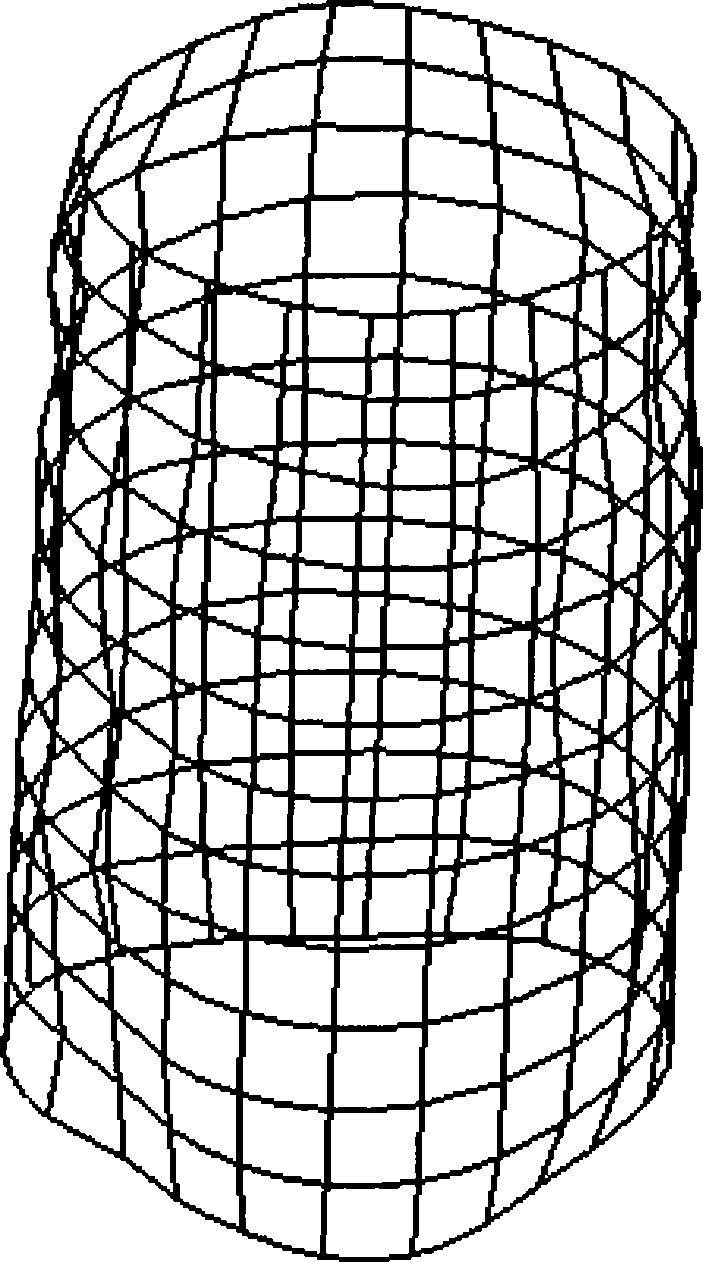Fluorescent molecule tomography rebuilding method based on linear relationship
A technology of fluorescence molecular tomography and linear relationship, which can be used in fluorescence/phosphorescence, 2D image generation, diagnosis, etc., and can solve problems such as improving method calculation speed
- Summary
- Abstract
- Description
- Claims
- Application Information
AI Technical Summary
Problems solved by technology
Method used
Image
Examples
Embodiment Construction
[0081] The mechanism of fluorescent molecular imaging can be used figure 1 Description: The excitation light emitted by the excitation light source excites the fluorescent probes (labeled proteins, tumors, fluorescent dyes, etc.) in the tissue to emit fluorescence, and the fluorescence transmitted to the surface is detected by the CCD camera. exist figure 1 , at position r sThe excitation light emitted by the point light source propagates in the experimental mouse body, indicated by the solid arrow. After the excitation light encounters the fluorescent probe, it will be absorbed by the fluorescent probe, and then the fluorescent probe will be excited to emit fluorescence with a higher wavelength. Fluorescence propagation in experimental mice is indicated by dashed arrows. Fluorescence reaching the surface of the experimental mouse opposite to the excitation light source can be detected with a CCD camera. There is a fluorescence filter in front of the CCD camera to ensure t...
PUM
 Login to View More
Login to View More Abstract
Description
Claims
Application Information
 Login to View More
Login to View More - R&D
- Intellectual Property
- Life Sciences
- Materials
- Tech Scout
- Unparalleled Data Quality
- Higher Quality Content
- 60% Fewer Hallucinations
Browse by: Latest US Patents, China's latest patents, Technical Efficacy Thesaurus, Application Domain, Technology Topic, Popular Technical Reports.
© 2025 PatSnap. All rights reserved.Legal|Privacy policy|Modern Slavery Act Transparency Statement|Sitemap|About US| Contact US: help@patsnap.com



